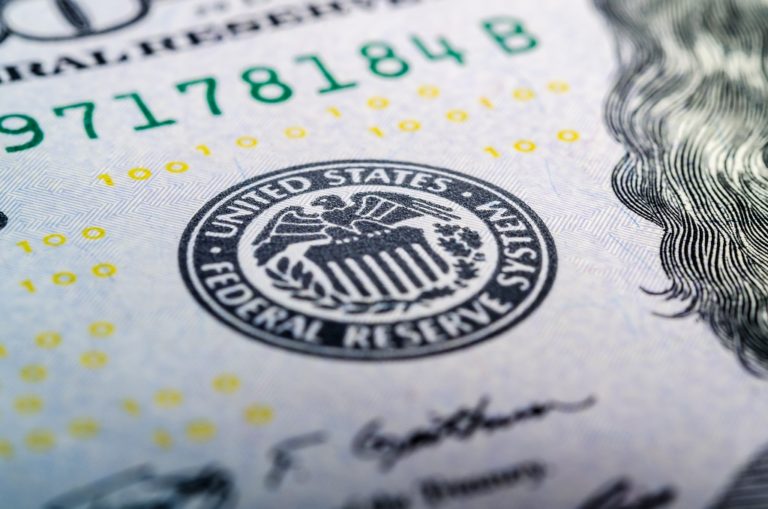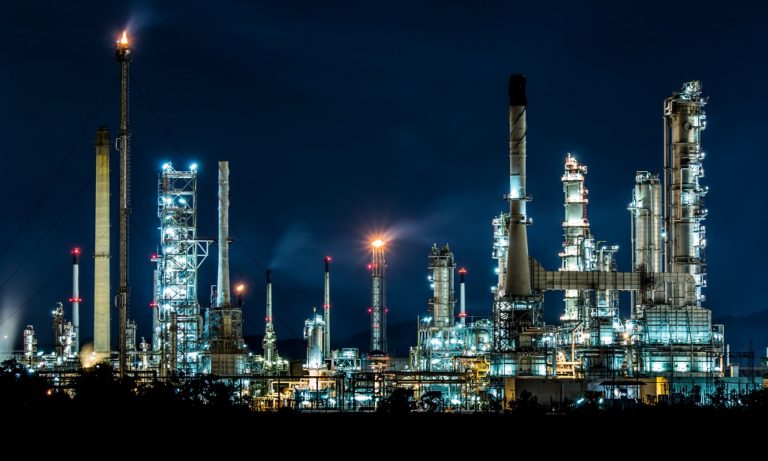Is Venezuela’s Collapse Near? [Analysis]
When Will the Revolution Come to Venezuela?
In early September, Venezuela’s minister of agriculture had a piece of advice for all those ungrateful middle-class types moaning about food shortages and empty supermarket shelves: eat rabbits. The question that investors ask themselves these days: Is Venezuela’s collapse near?
“There is a cultural problem because we have been taught that rabbits are cute pets,” the urban agriculture minister, Freddy Bernal, said during a televised broadcast with Maduro this week. “A rabbit is not a pet; it’s two and a half kilos of meat that is high in protein, with no cholesterol.“ Raise ‘em, kill ‘em, eat ‘em, and half of Venezuela’s problems would surely in due course melt away.
As absurd as the entire episode might appear on the surface, the more preposterous it becomes when you give it any thought. How on earth does a minister get away with saying something like that in any country – let alone what was once one of Latin America’s richest? Why haven’t frequent riots, shortages, protests, escalating crime, inflation, shortages of medical goods, and an obsessive kleptocracy apparently as resistant to critique as Donald Trump yet been swept away? Looking over Venezuela’s long and tortured course through Chavismo to its current doldrums, it’s easy to see governments have been toppled over less. So why not here?
The answer is, alas, not as simple as Freddy Bernal’s rabbit plan. One element to it is the powerful control Madura and his cabal exert over key organs of state, including the Supreme Court, and their concurrent ability to ride roughshod over the opposition.
Consider the fact that Maduro has ruled by decree for nearly a year – that is, he has pushed through every piece of legislation he’s desired without a single vote in parliament.
Beyond this, the armed forces remain largely on his side, and, though their crackdowns have not yet escalated into an outright massacre, have never flinched from protecting Maduro’s rule.
Lastly, Venezuela’s biggest trade partner now is China – a nation that buys nearly 70% of the troubled republic’s oil, and returns the favor in the form of desperately needed cash and military equipment, and is perfectly content to let the successors of Hugo Chavez take a sledgehammer to whatever fragile democratic legacy remains in the country.
Countries that don’t – including the USA and a clutch of regional neighbors – are denounced as part of a ‘neo-Nazi conspiracy’ and ‘wrecking policy’, and they, not the Venezuelan government, are to blame for the country’s current ills.
This last line of argument – one which Maduro’s mentor Chavez was fond of using – shows us the last and most powerful reason the revolution hasn’t yet quite come to Venezuela. Institutions and foreign support do not necessarily save regimes alone.
For a government to endure in circumstances such as those Venezuela has, is in there must either be overwhelming support from an armed body and an utterly cowed population (witness Cambodia in the 1970s) or sufficient support amongst the population to mean that the challenge to the authorities is never quite enough to knock them over.
And this is the case in Venezuela. Chavez may have mishandled the country’s oil income, hobbled industry, and crushed foreign investment. But he also created over 100,000 workers’ cooperative to help those on the lowest rung of society buy into the enterprises they worked in.
Colossal micro-credit programs resulted in a variety of improvements in rural Venezuela – long ignored by the money-making classes of Caracas.
Poverty levels halved in the first decade of the 21st century, and infant mortality rates declined too. In short, despite the hyperinflation, the food shortages, and the chaos in the cities, for many rural and poorer Venezuelans – including the estimated 30% or so who still live beneath the poverty line – in terms of services and access, life has never been so good.
This is in no way to excuse or play down the calamity that Nicolas Maduro and Hugo Chavez have brought to Venezuela. No reasonable observer can look at the state Caracas finds itself in and convince themselves that whatever the rights of socialist rule, the wrongs have gone a long way towards wrecking them – if not wrecked them completely.
But it does explain how Maduro is still here, and why Venezuelans haven’t quite yet mustered in the numbers required to topple him and his cronies. The surprising thing is, all signs considered, there is no indication that this will necessarily change in the coming year or two. But then again, there was no sign in 1989 that the Berlin Wall would fall, and this much is certain: when Maduro and his cronies fall, it will be as unexpected.
A Question of Economic Sustainability
If the political process doesn’t unlock the country’s stalemate – economic reality should certainly do its part. Venezuela has been struggling with hyperinflation, recession, food shortages and blooming black markets. Imposed US sanctions should further worsen the general living conditions for its population.
All this would suggest dramatic political changes sooner rather than later as experts outdo each other with gloomy forecasts for 2018. Afterall, living conditions resemble those of war-stricken countries, with malnutrition and epidemic diseases on the rise.
But who is hoping for quick fixes or sudden catalysts will likely be disappointed and put on the waiting bench. Venezuela’s current government will do everything to survive and stay in power — and it has powerful allies. As Investors two factors need to be closely followed, (1) the oil market and (2) Venezuela’s debt situation and its relations with its key international creditors.
Oil Production and Oil Price
Venezuela’s economy is all about oil and gas. Revenue from petroleum exports makes up more than 50% of the country’s GDP and roughly 95% of total exports. It’s the sixth largest OPEC member widely considered to have the world’s largest proven oil reserves. But all these reserves are of little use – at least for the moment.
When oil traded above $100 a barrel a few years back everything was fine. Through its sale , Venezuela was able to accumulate international currency reserves it needed to finance everything from social programs, oil refinery infrastructure to military hardware. The FT estimated that Venezuela “enjoyed a petrodollar windfall worth an estimated $1tn.”
But when Oil prices collapsed due to weak demand, a strong dollar and booming U.S. shale production the easy flow of money was over and Venezuela’s structural problems came to light.
Economic inefficiencies, incompetence, and corruption were always part of Venezuela’s home-made problems. But with a new reality, these were magnified tenfold. The decline of oil production and rapidly decreasing currency reserves were a very predictable consequence and the beginning of a vicious cycle that continues today.
Oil production is projected to decline in 2018, as there is no money for upgrading the aging infrastructure let alone investing in new exploration projects. Oil experts predict a higher impact on Oil prices from Venezuela going forward than from the increased turmoil in the Middle East.
In an interview with CNBC in November, Bob Dudley, CEO of BP stated, “that despite the instability in the Middle East, the biggest risk for the Oil industry is Venezuela.”
Oil expert Dan Yergin, believes that If the global oil market suddenly loses Venezuela’s 2 million barrels of daily oil production, it would be “a big shock to the system,” that could rattle Oil prices in 2018.
Accordingly, Goldman Sachs revised its 2018 forecasts for Brent and WTI to $62 a barrel and $57.50 respectively, stating “a stronger-than-anticipated OPEC-led commitment to extend production cuts would support prices through 2018.” Whether these cuts will be voluntary or forced remains to be seen.
Debt, Debt and more Debt
It’s likely that the oil price will trade higher in 2018, though not by much. It certainly won’t be enough to resolve Venezuela’s pending debt collapse. It owes an estimated $140bn to international creditors with only $10bn in official currency reserves. With dwindling oil production and declining Oil exports, its financial situation can only get worse unless it can negotiate a favorable debt restructuring program.
Only a month ago, Venezuela defaulted on interest payments and late payment of key principal. In November, S&P Global declared that Venezuela had defaulted on its debts after missing a $200 million interest payment to global bond investors. It highlighted the urgency of its dire financial situation.
Ever since then international creditors have been discussing whether that should trigger a “credit event” which could trigger contractual obligations such as insurance payments involving credit default swaps. Venezuela Ccollapse near or not, there are other factors to consider.
China and Russia
Not all creditors are in the same boat, as each is vying for a favorable position what the FT calls a high-stakes poker game. As of now, Venezuela owes $64bn to bondholders, more than $20bn to allies China and Russia, $5bn to multilateral lenders such as the InterAmerican Development Bank, and tens of billions to the importers and service companies that maintain Venezuela’s key industry infrastructure.
Last month, Russia agreed to restructure $3.15bn in debt owed by Venezuela. The deal allows Venezuela to make “minimal” repayments on its Russian obligations over the next six years. It’s obvious that political ties between those countries are progressing and that Russian money has been key to keep Venezuela current government afloat.
It’s not only Russia that has a strategic interest in Venezuela. China is the other elephant in the room who intends to keep the current status quo as long as possible. After a lawsuit filed by a state-run Chinese company called Sinopec for missing payments, Venezuela quickly made payment for $21.5 million to a U.S. subsidiary of Sinopec. (The payment involved a 45,000-ton shipment of steel rebar delivered in 2013)
Following the slight diplomatic embarrassment came the demonstrative holding of hands and picture taking this week in China. Both nations proclaimed their strong bilateral ties and mutual contempt for US foreign policy. The fruits of all this back padding and hugging were the agreement to establish the International Center for Research and Innovation of Petroleum emotionally named the Hugo Chávez Frías.
Is Venezuela’s Collapse Near? Outlook for 2018
In order to break the current political and economic deadlock and the slow death of its population a major catalyst would be needed. A credit event in the form of an all-out sovereign debt default could constitute such an event.
If you followed major distressed debt investors a.k.a. vulture funds, such an event is exactly the outcome they are positioning themselves for in late 2017. Still upbeat from dream deals that involved $100bn of Argentine sovereign debt a few years back, they know too well that Venezuela’s case is an even more promising case for super profits.
Their strategy is fairly simple: Acquiring Venezuela’s debt at steep discounts after a general market panic. This is followed by suing the living hell out of any new government demanding full repayment on outstanding debt.
One could think that a country on the brink of financial ruin has nothing to offer – think again. These type of investors are pros who are not afraid to use all the tools at their disposal. If necessary seizing any offshore assets such as oil tankers or other oil-related assets that could cut into Venezuela’s vital bloodlines.
Nevertheless, a quick and decisive debt restructuring or a major credit event is very unlikely at this moment. China and Russia will see to that by keeping their patient alive; drop by drop. Only a financial shock somewhere else in the world could bring movement in this high stakes poker game. Venezuela would certainly be the first domino stone to drop that could reverberate not only through international Oil markets. The smart money, in the meantime, seems to be cocked and loaded.






